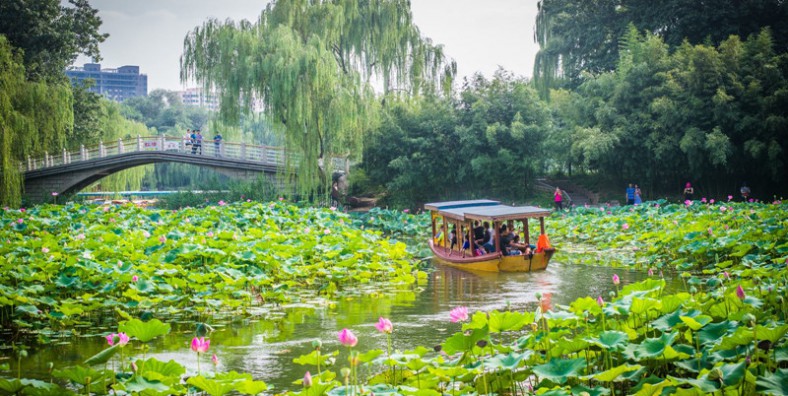Purple Bamboo Garden (Zizhuyuan) in Beijing

Purple Bamboo Park, also called Zizhuyuan Park or Black Bamboo Park, is one of the seven largest parks in Beijing. The park wins its fame for bamboo. Various bamboos are planted including purple bamboo, green bamboo, mottled bamboo, garden pink, and Phyllostachys aurea, etc.
English Name: Purple Bamboo Park in Beijing
Chinese Name: 北京紫竹院公园
Attraction Type: Beijing Attraction, Park, Nature
Best Time to Visit: May, September, October
Recommended Visiting Time: about 1-2 hours
Admission Fee: Free
Address in English: No. 35 Zhongguancun South St, Haidian District, Beijing
Address in Chinese: 北京市海淀区中关村南大街35号
Why is the Purple Bamboo Garden in Beijing so Special?
Purple Bamboo Park, also called Zizhuyuan Park or Black Bamboo Park, is one of the seven largest parks in Beijing. The park wins its fame for bamboo. Various bamboos are planted including purple bamboo, green bamboo, mottled bamboo, garden pink, and Phyllostachys aurea, etc. Everywhere in the park integrates the factor of bamboo, such as the stream, stones, trees, buildings, forming into different bamboo scenery of which the mottled bamboo garden is the most representative, reputed as ‘the garden in the garden’.
Where is the Purple Bamboo Garden in Beijing?
Purple Bamboo Garden is situated at 45, Baishiqiao Lu and near the west of the Capital Gymnasium in Haidian District.
How to Get There?
- Take Bus No. 77, 87, 114, 118, 334, 360, 362, 534, 588, 658, or Yuntong 104 and get off at Zizhuyuan South Gate Station.
- Take Bus No. 588 and get off at Zizhuyuan North Gate.
- Take Metro Line 4 or Line 9 to National Library and leave from Exit D. After that, walk west for 2 minutes, you will get to the East Gate of Purple Bamboo Garden.
History
The park consists of three connecting lakes covering over a total area of 48 hectares. The three major lakes in the park were formed in 1159. During the Ming Dynasty, the Wanli Emperor built a royal garden on the bank of the lake in 1577, and the bamboo was planted following that. In 1954, the park was rebuilt and open to the public. During the 2008 Summer Olympics, it was selected as one of the three protest zones.
Bamboo Scenery
Constructed around canals and large lakes, it’s famous for its bamboo forest scenery. When you walk into the garden, you will find yourself in a bamboo world garden displaying more than 50 kinds of bamboos. Among all kinds of bamboos, such as mottled bamboos, purple bamboos, fishing rods and bamboos, the most common one is purple bamboos. From April to June every year, most of the things in the garden of the bamboo culture festival are decorated with bamboos, including floors, pavilions and tables, chairs and bridges. Through various bamboo buildings here, you will have a better understanding of Chinese bamboo culture, and even meet some of many people to enjoy the art of bamboo dance.
Useful Travel Tips
- Admission Fee: Free
- Opening Hours: Apr. – Oct.: 06:00-21:00; Nov. – Mar.: 06:00-20:00














